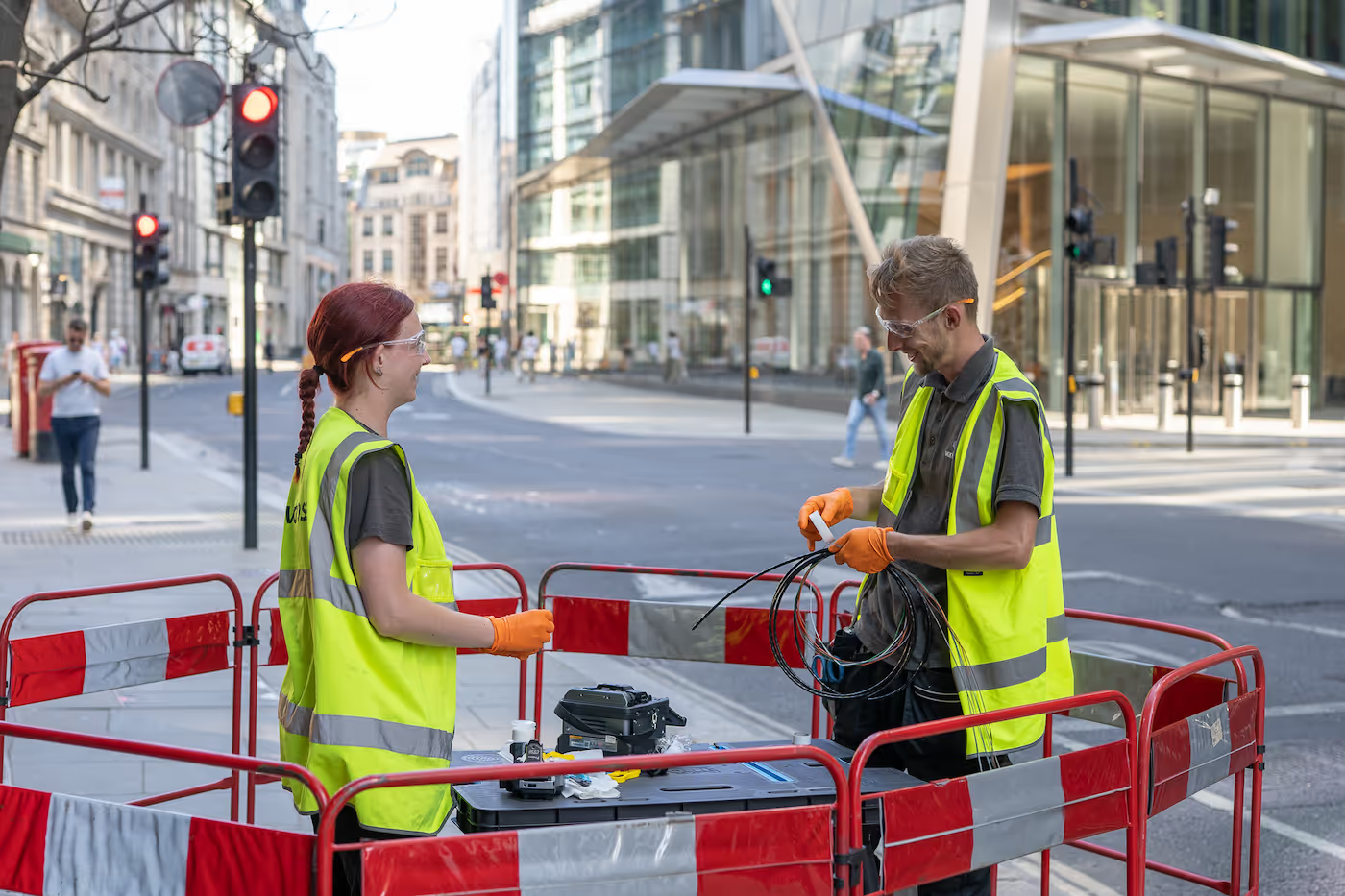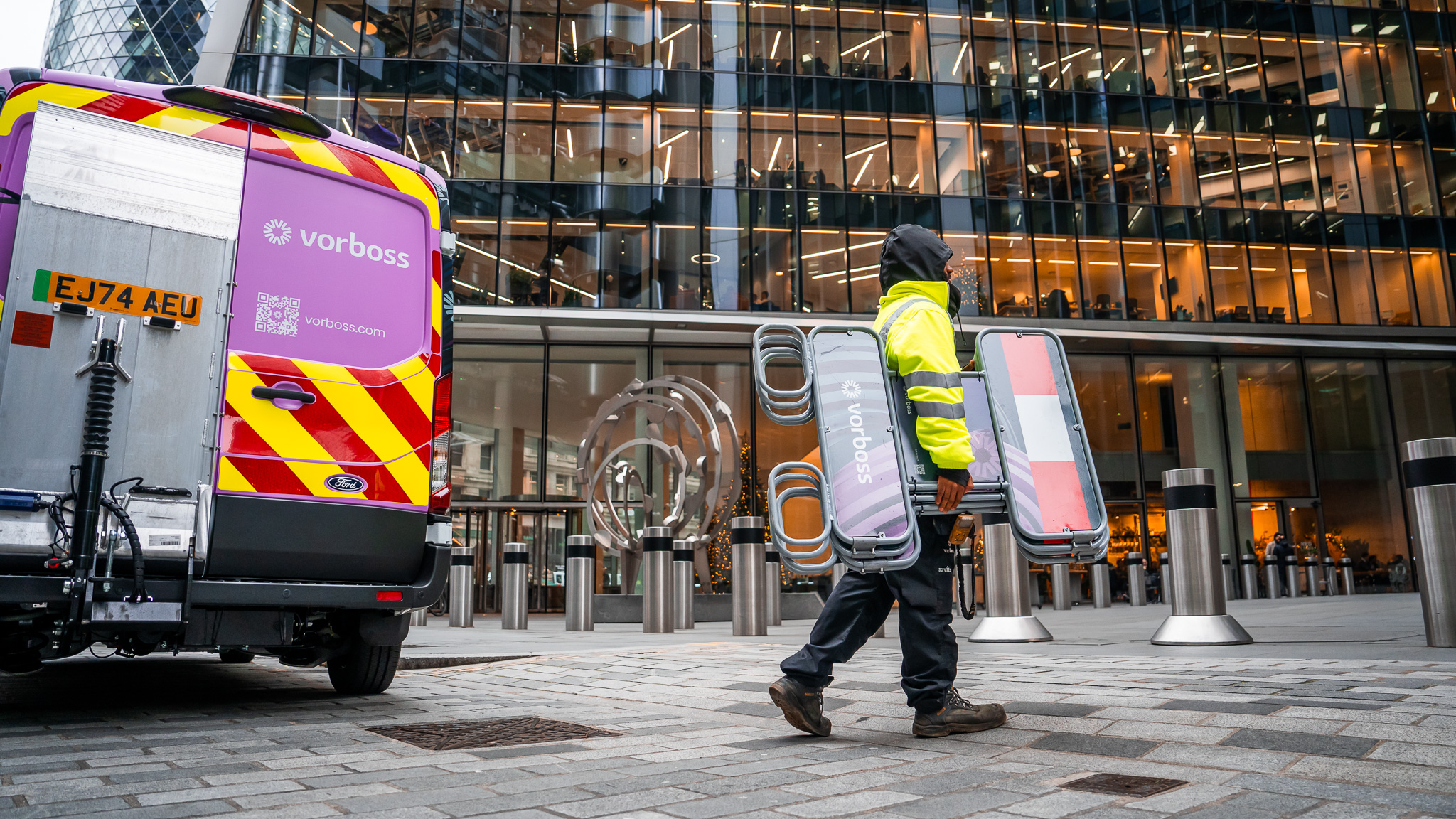Vorboss recognised by Sunday Times as One of the Best Places to Work in the UK
May 18, 2023
|
5
min read

Highlights
Vorboss was named one of the Sunday Times Best Places to Work in the UK and Best Places to Work for Women. We are committed to fostering an inclusive workplace culture in the telecoms industry, with initiatives including the Vorboss Academy and our Female First campaign.
Exciting news! Vorboss has been recognised as one of the Sunday Times Best Places to Work in the UK and Best Places to Work for Women. We couldn't be happier to be recognised for our commitment to creating an inclusive workplace culture within the telecoms industry. Being listed among the 40 best employers in Britain is a real milestone for us.
As the UK's only dedicated enterprise fibre network, our emphasis on inclusion, equity, and diversity has positioned us as a leader in driving positive change within the tech space. This wouldn't have been possible without our people-centric approach that runs through all areas of the business, and we are proud to be recognised by the prestigious Sunday Times Best Places to Work awards.
Jaye O'Callaghan, our Chief People Officer, says, 'We have worked tirelessly to make Vorboss a destination for some of the most ambitious, hard-working and friendly people. We're proud to be the flag bearer for the whole telecommunications industry and are thrilled that our team has been acknowledged in this way.'
Let's dive deeper into how Vorboss embraces diversity, promotes accessibility, invests in employee development, and supports women in the workplace. We're here to reshape the telecoms industry, and this recognition from the Sunday Times fuels our passion even more.

Putting people first
The Sunday Times Best Places to Work awards are all about the employees, so the results are solely based on a survey sent out to our incredible team. With topics ranging from reward and recognition to empowerment and wellbeing, the survey covers it all and is considered a trusted barometer of employee-centric businesses across industries.
We have built a workplace that revolves around our people, with a focus on diversity, accessibility, and employee development. Supporting women in the workplace is also a top priority for us.
Our goal? To provide the absolute best job experience for our employees while prioritising their individual needs.
Embracing diversity and accessibility

In the telecoms industry, diversity and accessibility have long been crucial challenges; that's why we have adopted a proactive approach. Our CEO and founder Tim Creswick comments, 'We're only going to change the face of the industry if we continue to attract a diversity of thought and talents in the coming decades.'
We firmly believe that people and culture are the bedrock of a thriving business. From day one, we've implemented a wide range of initiatives to support employees from various backgrounds and cultivate a genuinely diverse, engaged, and motivated workforce.
A shining example of this commitment is our in-house training academy. The Vorboss Academy is designed to be inclusive, requiring no prior experience and serving as a pathway to a telecoms career for anyone who aspires to it. We're proud to offer this opportunity to individuals from various backgrounds, ensuring that a career in telecoms is accessible to all.
Nurturing growth and development
We strongly emphasise continuous employee development. We start by going the extra mile to empower our team with additional educational resources. If they have a specific request for further education, professional development, mentorship, or professional certifications, we're here to make it happen. Our office library is also stocked with a selection of self-development books, providing a wealth of knowledge and inspiration.
Investing in our team's growth is essential for their success and satisfaction. That's why we've introduced a unique opportunity for all our staff: an additional 5% of their salary dedicated to life-enhancing training. We want our employees to be free to choose the training opportunities that resonate with them, whether it's leadership coaching or swimming lessons, to support their personal and professional enrichment.
Empowering women in the workplace

We take great pride in being recognised as a workplace that provides unwavering support for women. We work diligently to create an inclusive environment where all individuals feel valued. Our commitment to gender equality is reflected in our operations and recruitment practices.
We've taken significant strides in diversifying our workforce by actively recruiting female Installation Technicians, Warehouse Operatives, and Mobile Field Support members. This intentional focus on gender diversity has fostered a diverse and vibrant workplace. Not only does this contribute to better employee retention, but it also attracts new talents who are inspired by our inclusive culture. In fact, within the telecoms industry, our Installation Team boasts an impressive 35% representation of women, a unique achievement.
We're determined to break barriers and set new standards in the telecoms sector and beyond. Our vision is to see more women occupying critical roles across our business, paving the way for a more equal and gender-balanced workforce. By championing gender diversity, we strive to create a workplace that is representative of the world we live in.
To ensure inclusivity, we've implemented specific measures that address the unique needs of women in the workplace. We provide welfare vans that offer privacy and relief to our Installation Technicians. Specially sourced tools and uniforms are available to ensure the perfect fit for women. Additionally, we recognise the importance of period days, flexible work arrangements, and family-friendly policies.
Leading the way for positive change
Our initiatives should become the industry standard, fostering high-performance teams, inclusive workplace cultures, and sustainable business practices.
As Tim Creswick puts it, 'It's fantastic to be recognised as one of the UK's best companies to work for, not just in telecoms, but across all sectors. We hope this signals a positive change in how telecoms companies are regarded in the wider UK market. We're only going to change the face of the industry if we continue to attract a diversity of thought and talents in the coming decades, and this marks an important milestone in recognising the immense effort invested by our team to date.'
Thanks to the Sunday Times for naming us as one of the best places to work in the UK and highlighting the inclusive workplace culture we're so proud of.
We're hiring! Visit the vacancies section of our website to check out our live roles.
Tell us about yourself so we can serve you best.
Got a question?
More articles

For many landlords and building managers, the word “wayleave” feels like the responsible route whenever a fibre circuit is being installed on their property. It sounds formal and safe – a neat legal box to tick.
In many cases, however, a wayleave adds unnecessary complexity and delays, frustrates tenants, and can expose landlords to long-term legal risks.
At Vorboss, we’ve connected thousands of office spaces across London without a wayleave, keeping landlords in full control and getting tenants online faster.

What is a wayleave?
A wayleave is a written agreement between a landowner and a telecoms operator. It gives the operator permission to install and keep equipment on private property.
What many people don’t realise is that signing a wayleave also activates “Code rights” under the Electronic Communications Code. These rights go beyond simple permission, they give the operator legal powers to stay on the property indefinitely, access it when needed, and even refuse removal of their equipment in certain situations.
For a typical connection into a commercial building in London, a wayleave can make the fibre installation process slower, more expensive, and limit the landlord’s flexibility long term.
Why a wayleave isn’t required for standard in-building fibre connections
For a standard in-building fibre connection serving a tenant, a wayleave isn’t a legal requirement. Important protections, like building access, fire safety, repairing any damage, and removing equipment, are already covered by the tenant’s lease and usual building rules.
If no wayleave is signed, no Code rights are triggered, meaning the landlord retains full control and the installation exists under a simple, fully revocable licence.
In practice, this gives landlords far more protection and flexibility:
- No legal lock-in – the telecoms operator has no long-term rights to stay or refuse removal.
- Landlords keep full control – equipment can be moved or removed when the building changes.
- Faster fibre installation – no time lost in drafting contracts or solicitor reviews.
- Happier tenants – connections go live quicker; tenants get to move in faster.
By contrast, signing a wayleave and granting Code rights introduces a complex and expensive legal process for any fibre removal or relocation. This can take at least 18 months, plus potential court or tribunal proceedings, making it slower, and far less flexible for the landlord.

Public services across central London are evolving, and the City of London Corporation is leading the way.
Whether you work, live or study in the Square Mile, you’ll soon feel the difference that faster, more dependable connectivity brings.

What is the Future Network Programme?
The City of London Corporation is rolling out the Future Network Programme, a major project to modernise its entire digital infrastructure and bring everything under one unified network.
From offices and schools to iconic green spaces like Hampstead Heath, cultural destinations like the Barbican, and historic markets such as Leadenhall and Old Spitalfields, this upgrade will mean more reliable connectivity across the City’s buildings and public spaces.
It also extends to essential services, including critical sites run by the City of London Police. This enhanced connectivity will support everything from secure communication systems to faster, more resilient networks for emergency operations.
Leading this transformation is Roc Technologies, supported by Juniper Networks and Palo Alto Networks; all powered by the Vorboss fibre network. Together, we’re bringing the City onto a modern digital foundation that’s ready to support its future.
Who the Future Network Programme benefits and how?
The programme is designed for everyone who depends on public services in the Square Mile:
- Students in City-run schools will have fast, reliable connectivity to fully access digital learning tools.
- Public-sector teams will experience smoother hybrid working, better access to online platforms, and more efficient collaboration across locations.
- Residents and visitors will see improvements in public Wi-Fi, digital services, and online access in libraries, community hubs, and other shared spaces.
- The City of London Police will gain a more secure, faster and resilient network that enhances CCTV reliability and enables more effective frontline operations.

.avif)

.avif)

